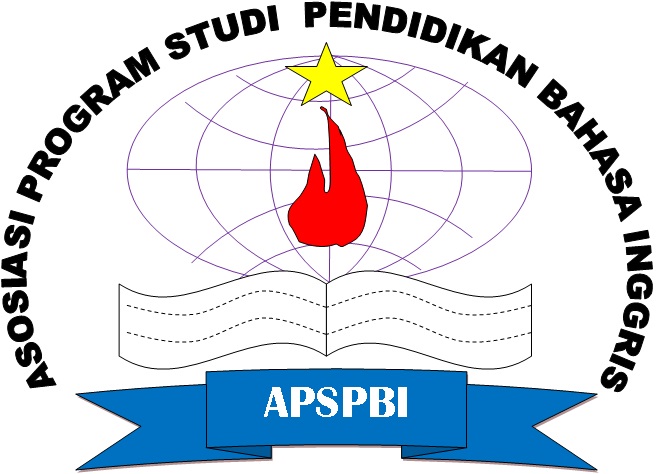The implementation of EFL online learning: how do the non-English department students perceive it?
DOI:
https://doi.org/10.28918/erudita.v1i1.4451Keywords:
Cross-sectional survey, EFL (English as a foreign language), Motivation, Optimism, Online learningAbstract
The COVID-19 outbreak influences nearly all facets of life, including education. This study conducted survey investigations to detect non-English students' views on the implementation of EFL online learning. This study used cross-sectional survey research designs employing questionnaires and interviews as data-gathering devices and procedures. The population of this study was all the first-graders of the Islamic Education Program of a State Institute for Islamic Studies situated in Central Java, Indonesia, in the academic year of 2020/2021. A number of 135 students took part as the sample of this study. The results of the study showed that there are three main phases of EFL online learning. First, at the preparation phase, they had high optimism of EFL online learning. Second, it turned into caution and forbearance at the implementation phase. At last, their optimistic level was increasing at the end (evaluation phase). This study means that it is not simple to retain the enthusiasm and optimism of students through EFL online study, particularly in non-English department classrooms. Teachers should be innovative in delivering instructions for learning, offering learning equipment, and selecting appropriate learning platforms. Teachers should also be able to comprehend pupils' psychological state to prevent boredom in online learning.
References
Abidah, A., Hidaayatullaah, H. N., Simamora, R. M., Fehabutar, D., & Mutakinati, L. (2020). The Impact of COVID-19 to Indonesian education and its relation to the philosophy of “Merdeka Belajar.” Studies in Philosophy of Science and Education, 1(1), 38–49. https://doi.org/10.46627/sipose.v1i1.9
Adnan, M. (2017). Perceptions of senior-year ELT students for flipped classroom: A materials development course. Computer Assisted Language Learning, 30(3–4), 204–222. https://doi.org/10.1080/09588221.2017.1301958
Allain-Dupré, D., Chatry, I., Michalun, V., & Moisio, A. (2020, November 10). The territorial impact of COVID-19: Managing the crisis across levels of government. OECD. https://www.oecd.org/coronavirus/policy-responses/the-territorial-impact-of-covid-19-managing-the-crisis-across-levels-of-government-d3e314e1/
Altunay, D. (2019). EFL students’ views on distance English language learning in a public university in Turkey. Studies in English Language Teaching, 7(1), 121-134. http://dx.doi.org/10.22158/selt.v7n1p121
Alvarez, I., Espasa, A., & Guasch, T. (2012). The value of feedback in improving collaborative writing assignments in an online learning environment. Studies in Higher Education, 37(4), 387–400. https://doi.org/10.1080/03075079.2010.510182
Bailey, D. R., & Lee, A. R. (2020). Learning from experience in the midst of COVID-19: Benefits, challenges, and strategies in online teaching. Call-Ej, 21(2), 176–196. https://pesquisa.bvsalud.org/global-literature-on-novel-coronavirus-2019-ncov/resource/en/covidwho-827571
Benosa, J. E. (2014). Learner autonomy and practice in a flipped EFL classroom: Perception and perspectives in new digital environments. Bulletin of Chiba Shodai University, 52(2), 253–275.
Chao, Y. C. J., & Lo, H. C. (2011). Students’ perceptions of Wiki-based collaborative writing for learners of English as a foreign language. Interactive Learning Environments, 19(4), 395–411. https://doi.org/10.1080/10494820903298662
Chen, T. (2016). Technology-supported peer feedback in ESL/EFL writing classes: A research synthesis. Computer Assisted Language Learning, 29(2), 365–397. https://doi.org/10.1080/09588221.2014.960942
Creswell, J. W. (2012). Educational research: Planning, conducting and evaluating quantitative and qualitative research (4th ed.). Pearson Education Inc.
Deutsch, N. (2010). E-learning for ESL teachers using synchronous and asynchronous VLE [PowerPoint slides]. http://hitmeif.wiziq.com/online-class/424406-e-learning-for-esl-teachers-using-synchronous-and-asynchronous-vle
Farrah, M. (2015). Online collaborative writing: Students’ perception. Journal of Creative Practices in Language Learning and Teaching (CPLT), 3(2), 17–32. https://cplt.uitm.edu.my/v1/images/v3n2/Article2.pdf
Gavranović, V. (2017). Enhancing learners’ autonomy through flipped classes. Sinteza 2017: International Scientific Conference on Information Technology and Related Research, 498–502. https://doi.org/10.15308/Sinteza-2017-498-502
Guasch, T., Espasa, A., Alvarez, I. M., & Kirschner, P. A. (2013). Effects of feedback on collaborative writing in an online learning environment. Distance Education, 34(3), 324–338. https://doi.org/10.1080/01587919.2013.835772
Harapan, H., Itoh, N., Yufika, A., Winardi, W., & Keam, S. (2020). Coronavirus disease 2019 (COVID-19): A literature review. Journal of Infection and Public Health, 13(5), 667–673. https://doi.org/10.1016/j.jiph.2020.03.019
Ifeakor, A. C., & Okoli, J. N. (2014). Optimizing e-Learning opportunities for effective assessment in science education in Nigerian State Universities. Journal of Educational Practice, 5(11), 101–108. https://core.ac.uk/download/pdf/234635634.pdf
Kumar, A., Singh, R., Kaur, J., Pandey, S., Sharma, V., Thakur, L., Sati, S., Mani, S., Asthana, S., Sharma, T. K., Chaudhuri, S., Bhattacharyya, S., & Kumar, N. (2021). Wuhan to World: The COVID-19 Pandemic. Frontiers in Cellular and Infection Microbiology, 11(March), 1–21. https://doi.org/10.3389/fcimb.2021.596201
Mahendra, Y. D. (2018). Pengembangan media e-modul berbasis aplikasi android materi komunikasi sinkron dan asinkron dalam jaringan mata pelajaran simulasi dan komunikasi digital. Jurnal Mahasiswa Teknologi Pendidikan, 9(2), 1-9. https://jurnal.unesa.ac.id/index.php/jmtp/article/view/29102
Miles, M., & Huberman, A. M. (1994). Qualitative data analysis: An expanded sourcebook (2nd ed.). Sage Publications.
Mulyadi, D. (2019). Students’ perceptions of blended learning in mastering English for specific purposes. Journal of Physics: Conference Series, 1339(1), 1-6. https://doi.org/10.1088/1742-6596/1339/1/012116
Muthuprasad, T., Aiswarya, S., Aditya, K. S., & Jha, G. K. (2021). Students’ perception and preference for online education in India during COVID-19 pandemic. Social Sciences & Humanities Open, 3(1), 1-11. https://doi.org/10.1016/j.ssaho.2020.100101
Nguyen, T. (2018). Implementation of English flipped classrooms: Students’ perceptions and teacher’s reflection. International Journal of Research Studies in Language Learning, 7(3), 87–108. https://doi.org/10.5861/ijrsll.2017.1876
Niess, M. L. (2010). Knowledge growth in teaching Mathematics/Science with spreadsheets: Moving PCK to TPACK through online professional development. Journal of Digital Learning in Teacher Education, 27(2), 42–52. https://doi.org/10.1080/21532974.2010.10784657
Ogden, L. (2015). Student perceptions of the flipped classroom in college Algebra. Primus, 25(9), 782–791. https://doi.org/10.1080/10511970.2015.1054011
Patricia Aguilera-Hermida, A. (2020). College students’ use and acceptance of emergency online learning due to COVID-19. International Journal of Educational Research Open, 1(August), 1-8. https://doi.org/10.1016/j.ijedro.2020.100011
Perveen, A. (2016). Synchronous and asynchronous e-language learning: A case study of Virtual University of Pakistan. Open Praxis, 8(1), 21–39. https://doi.org/10.5944/openpraxis.8.1.212
Rahimi, M. (2011). Computer anxiety and ICT integration in English classes among Iranian EFL teachers. Procedia Computer Science, 3, 203–209. https://doi.org/10.1016/j.procs.2010.12.034
Ramadhan, R., Chaeruman, U. A., & Kustandi, C. (2018). Pengembangan pembelajaran Bauran (blended learning) di Universitas Negeri Jakarta. Jurnal Pembelajaran Inovatif, 1(1), 37-48. https://doi.org/10.21009/JPI.011.07
Şendağ, S., & Ferhan Odabaşı, H. (2009). Effects of an online problem-based learning course on content knowledge acquisition and critical thinking skills. Computers & Education, 53(1), 132–141. https://doi.org/10.1016/j.compedu.2009.01.008
Shereen, M. A., Khan, S., Kazmi, A., Bashir, N., & Siddique, R. (2020). COVID-19 infection: Origin, transmission, and characteristics of human coronaviruses. Journal of Advanced Research, 24, 91–98. https://doi.org/10.1016/j.jare.2020.03.005
Thongsri, N., Shen, L., & Bao, Y. (2019). Investigating factors affecting learner’s perception toward online learning: Evidence from ClassStart application in Thailand. Behaviour and Information Technology, 38(12), 1243–1258. https://doi.org/10.1080/0144929X.2019.1581259
Toyoda, E. (2001). Exercise of learner autonomy in project-oriented CALL. CALL-EJ Online, 2(2), 1–14. http://callej.org/journal/2-2/toyoda.html
Tseng, M. F., Lin, C. H., & Chen, H. (2018). An immersive flipped classroom for learning Mandarin Chinese: Design, implementation, and outcomes. Computer Assisted Language Learning, 31(7), 714–733. https://doi.org/10.1080/09588221.2018.1440603
Wang, L. (2019). The impact of computer-mediated contexts on interaction pattern of ESL learners in collaborative writing. Technology, Pedagogy and Education, 28(5), 547–562. https://doi.org/10.1080/1475939X.2019.1674183
Wei, H. C., & Chou, C. (2020). Online learning performance and satisfaction: Do perceptions and readiness matter? Distance Education, 41(1), 48–69. https://doi.org/10.1080/01587919.2020.1724768
Wiersinga, W. J., Rhodes, A., Cheng, A. C., Peacock, S. J., & Prescott, H. C. (2020). Pathophysiology, transmission, diagnosis, and treatment of Coronavirus Disease 2019 (COVID-19): A Review. JAMA - Journal of the American Medical Association, 324(8), 782–793. https://doi.org/10.1001/jama.2020.12839
Wisdom, J., & Creswell, J. W. (2013). Integrating quantitative and qualitative data collection and analysis while studying patient-centered medical home models. Agency for Healthcare Research and Quality, 13-0028-EF, 1–5. https://doi.org/No. 13-0028-EF.
Yunita, W., & Maisarah, I. (2020). Students’ perception on learning language at the graduate program of English education amidst the COVID-19 pandemic. Linguists: Journal of Linguistics and Language Teaching, 6(2), 107–120. http://dx.doi.org/10.29300/ling.v6i2.3718
Zamari, Z. M., Adnan, A. H. M., Idris, S. L., & Yusof, J. (2012). Students’ perception of using online language learning materials. Procedia-Social and Behavioral Sciences, 67, 611-620. https://doi.org/10.1016/j.sbspro.2012.11.367
Downloads
Published
How to Cite
Issue
Section
License
Copyright (c) 2021 M. Ali Ghufron

This work is licensed under a Creative Commons Attribution-ShareAlike 4.0 International License.















